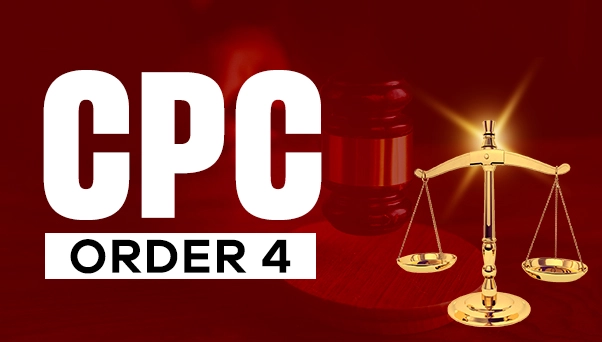1. Title and Commencement:
Order 4 outlines the process by which a civil suit is initiated. It specifies the various documents that need to be filed with the court to commence a lawsuit, such as the plaint (the formal statement of the plaintiff's claim) and any accompanying documents.
2. Parties to Suits:
For a suit to be valid, Rule 1 requires that a plaint is submitted to the court. The plaint outlines the court's name, the plaintiff's identity, description, and residence, as well as the defendant's name, details, and address. The plaint initiates the legal proceedings between the involved parties.
3. Contents of Plaint:
Every lawsuit filing is guided by certain rules. Rule 2 outlines the necessary components of a plaint. This includes details like the reason for the legal action, when the issue began, and the specific remedy the plaintiff seeks.
4. Particulars to be given in Plaint
Rule 3 expands on the specifics needed in the legal complaint, like the sum of money demanded, descriptions of property involved, and other essential details to comprehend the plaintiff's claim fully.
5. Verification of Plaint
The law requires that the plaintiff or someone who understands the facts must verify the plaint. This confirmation declares that the statements in the plaint are accurate to the best of the verifier's understanding.
6. Ordering Return of Plaint
Should the court uncover any deficiencies or irregularities in the plaint, Rule 5 grants it the authority to mandate its return. This might encompass missing information or inappropriate formatting, among other potential issues.
7. Return of Plaint
The legal system has provisions to address issues with legal documents. Rule 6 specifies the steps when a court instructs to revise a plaint. The plaintiff receives a chance to correct the flaws highlighted by the judge. After making the required changes, the amended plaint can be resubmitted for consideration. In essence, Order 4 of the CPC provides a structured process for commencing civil suits, ensuring that the necessary information is provided to the court in a clear and systematic manner. Compliance with these rules is essential for the smooth functioning of the legal system and for ensuring fair and efficient resolution of disputes.
